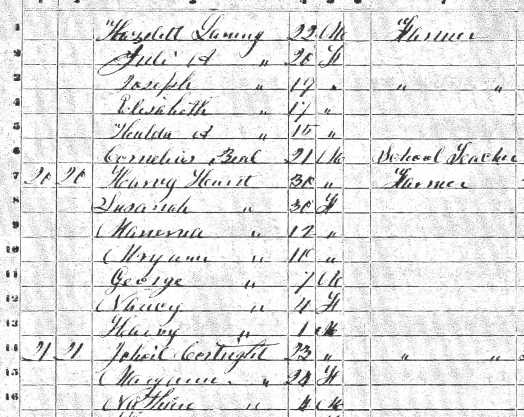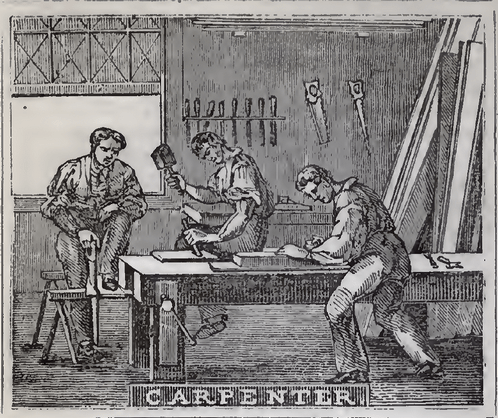Week 1: #52 Ancestors – Fresh Start
By Eilene Lyon
To genealogists, the FAN acronym stands for Friends, Associates, Neighbors – people we should be researching alongside our ancestors to provide context and clues to family connections.
My knee surgery rehab time on the exercise bike prompted me to start watching some Legacy Family Tree webinars. The two by Elizabeth Shown Mills blew me away. What a pro! She adamantly reminded me why we must research these ancillary people.
My gold rush book research is all about the FAN club. Just the list of people mentioned in the Jenkins family letters could take me a lifetime, if I chose to delve into them all. In fact, I would not have had a story without seeking out the key players in the drama. They weren’t necessarily related to the central couple: Henry Z. and Abigail Jenkins.
As I re-read my (dreadful) first draft and took notes, I realized that I need to flesh out the Indiana sections. My characters lived in Jay and Blackford Counties, which had no known newspapers at the time. For that reason, I have to rely on letters, diaries, and indirect evidence to figure out what was happening in the community.

It’s time for me to go back to the FANs of my main players, starting with a closer look at their neighbors in the 1850 census. Court and real estate records for those people will reveal additional personal connections.

In fact, it wouldn’t hurt to do a scan of all court records for the time span of my book to get a feel for community dynamics. That sounds pretty daunting. But if Shown Mills can do it, so can I.
As work on my second draft proceeds, I’m also taking a fresh look at sources that may shed more light on the life of the principal characters. More newspaper pages are added to online databases daily. I recently found this notice in an 1828 Philadelphia newspaper:

In addition, I located a couple online sources for Philadelphia city directories, and I now know where Henry Jenkins, house carpenter, lived in 1825, before he married Abigail Bedford. I also know where her family lived in the early 1800s.

Henry apparently had an intimate connection to this country’s first efforts at unionizing the labor force across an entire class of workers, rather than within a trade association.
As a journeyman carpenter in his 20s, Henry undoubtedly participated in the carpenters’ strike in 1827, agitating for a 10-hour work day with no reduction in pay. Master carpenters controlled the work and refused to back down. Construction ground to a halt as other trades went on strike in support of the carpenters.
The Mechanics’ Union of Trade Associations formed later that year, and created a newspaper to publicize the plight of the working class in Philadelphia. Journeymen were expected to work sunup to sundown, which meant excessively long hours in the summer months.
In the winter, master tradesmen would not hesitate to lay off workers rather than pay the same wages for a much shorter work day. In the harsh winter of 1826-27, 600 working men were thrown into debtor’s prison, unable to pay their loans. Conditions such as these tested the status quo as laborers perceived that the liberties fought for in the Revolution had not benefited their class, only the wealthy and powerful.
Clearly the upheavals in the construction industry made it more difficult for Henry Jenkins to make a living wage as a carpenter in the city. Could this be the reason he and Abigail left Philadelphia for Ohio in 1829 or 1830? Could Henry be his own boss and set his own rates as a small-town carpenter?
Feature image: “The Carpenter” from Popular Technology V. 2 by Edward Hazen (Public domain)
Sources:
https://explorepahistory.com/hmarker.php?markerId=1-A-BC
https://en.wikipedia.org/wiki/Mechanics%27_Union_of_Trade_Associations

That was very interesting. I hadn’t come across the sun up / sun down / sack them in the wintertime process before, but I suppose I’m not surprised by it.
LikeLiked by 1 person
Exploiting labor has been going on for a long time. Now we see it in the “gig” economy. No sick leave for those people! (i.e. no Uber rides)
LikeLike
Indeed. There is pressure here to do something about that given that so many livelihoods are going down the tubes. Not holding my breath with the dreadful UK govt.
LikeLiked by 1 person
You don’t have a monopoly on dreadful government!
LikeLike
Oh, I know, I know!!
LikeLiked by 1 person
Interesting. It totally makes sense to look beyond just the individual and family members to get a bigger picture and more context on their lives, as none of us live in isolation!
LikeLiked by 1 person
That may be changing for a while!
LikeLiked by 2 people
yup!
LikeLiked by 1 person
Thank you for the update on your book! You’re making good progress.
LikeLiked by 1 person
It’s a slow process. Maybe fiction goes quicker?
LikeLiked by 1 person
Not for me when there’s research involved. 😉
LikeLiked by 1 person
Interesting post, as per usual, and I am so looking forward to reading your new posts; best wishes for a speedy and full recovery from your knee surgery!
LikeLiked by 1 person
Thanks, Irene! I can finally walk the dogs again, which makes me very happy.😊
LikeLike
Labor vs Management equals, the more things change . . .
There is an astounding amount of research you do for this book, and talk about having to take the back channels to get there!
Good to see you. 🙂
LikeLiked by 1 person
Research hopefully equals some measure of understanding for why these people did what they did. Thanks for stopping by, Marc!
LikeLiked by 1 person
Have been missing you.
LikeLiked by 1 person
🤗
LikeLiked by 1 person
🙂
LikeLiked by 1 person
I am forever amazed by the ways in which people used to live, and how similar it can be to today’s world. Today it’s freelancers and the gig economy, but it doesn’t differ much from Henry’s experiences trying to do better for himself and other people.
LikeLiked by 1 person
And some people think history has nothing to teach us – and so we just do it all over again!
LikeLiked by 1 person